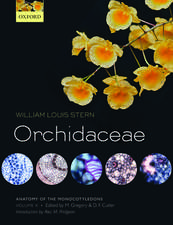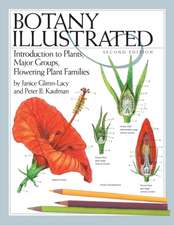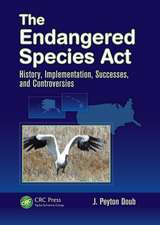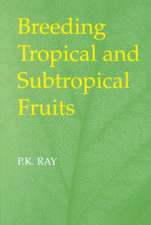The Gymnosperms
Autor Chhaya Biswas, B. M. Johrien Limba Engleză Paperback – 15 apr 2014
Preț: 655.13 lei
Preț vechi: 770.73 lei
-15% Nou
Puncte Express: 983
Preț estimativ în valută:
125.36€ • 129.33$ • 104.61£
125.36€ • 129.33$ • 104.61£
Carte tipărită la comandă
Livrare economică 27 martie-10 aprilie
Preluare comenzi: 021 569.72.76
Specificații
ISBN-13: 9783662131664
ISBN-10: 3662131668
Pagini: 494
Ilustrații: XXIII, 494 p. 607 illus.
Dimensiuni: 170 x 244 x 30 mm
Greutate: 0.83 kg
Ediția:1997
Editura: Springer Berlin, Heidelberg
Colecția Springer
Locul publicării:Berlin, Heidelberg, Germany
ISBN-10: 3662131668
Pagini: 494
Ilustrații: XXIII, 494 p. 607 illus.
Dimensiuni: 170 x 244 x 30 mm
Greutate: 0.83 kg
Ediția:1997
Editura: Springer Berlin, Heidelberg
Colecția Springer
Locul publicării:Berlin, Heidelberg, Germany
Public țintă
ResearchDescriere
The Gymnosperms is a well-illustrated comprehensive account of living and fossil plants of this group. Chapters 1 and 2 give a general account, and describe similarities and dissimilarities with pteridophytes and angiosperms. Chapter 3 deals with classification. The next 18 chapters (4-21) deal sequentially with fossil and living taxa. Phylogenetic relationships are considered for each order. Chapter 22 discusses the in vitro experimental studies on the growth, development and differentiation of vegetative and reproductive organs and tissues. Chapter 23 summarizes the economic importance of gymnosperms. Chapter 24 gives the conciuding remarks. Thus, there is a complete coverage of significant findings concerning morphology, anatomy, reproduction, development of embryo and seed, cytology, and -evolutionary trends and phylogeny. Ultrastructural and histochemical details are given wherever considered necessary. There is a comprehensive list of literature citations, and a plant index. This book is essentially meant for the postgraduate students in India and abroad. Undergraduate students can also use it profitably. The entire course should be taught in 25-30 lectures/hours and about 75 hours of field and laboratory work.












